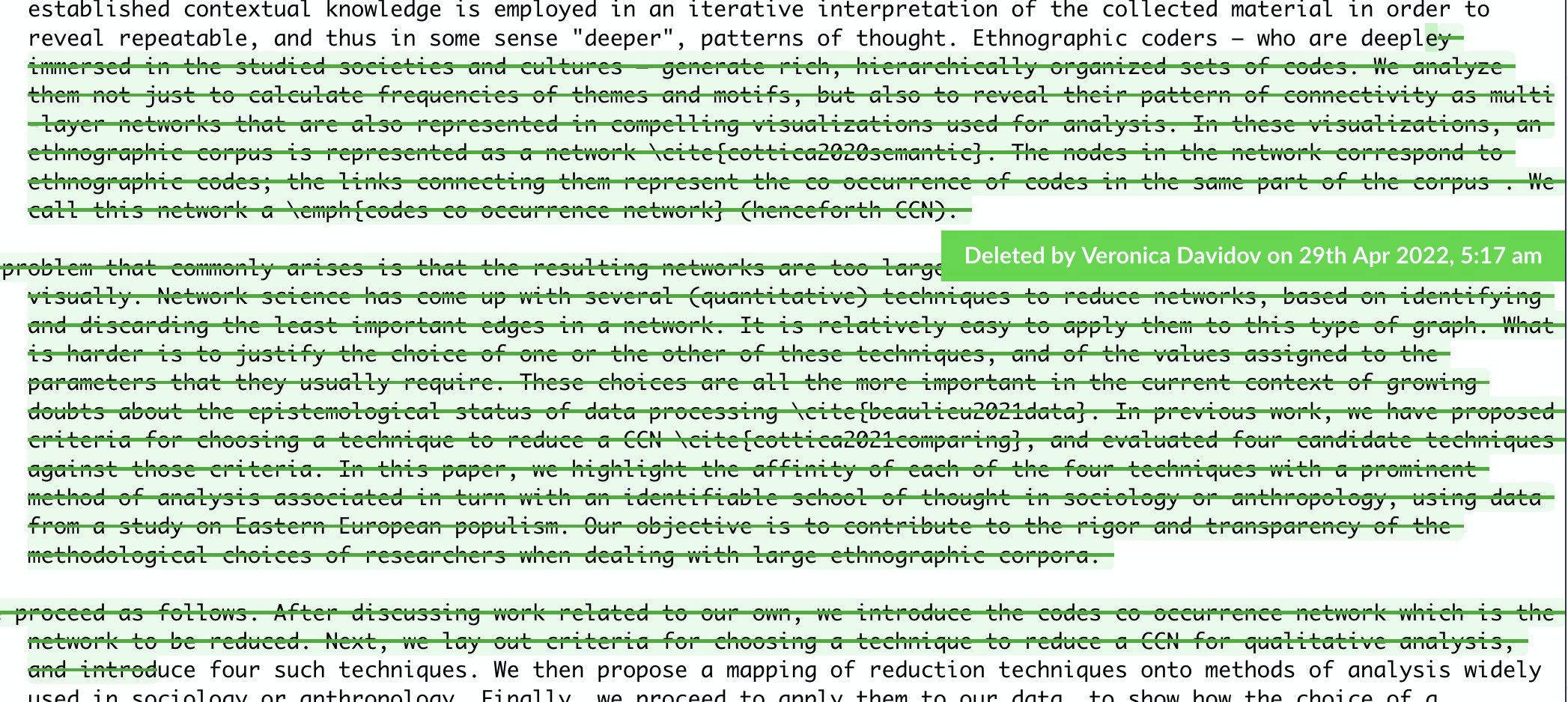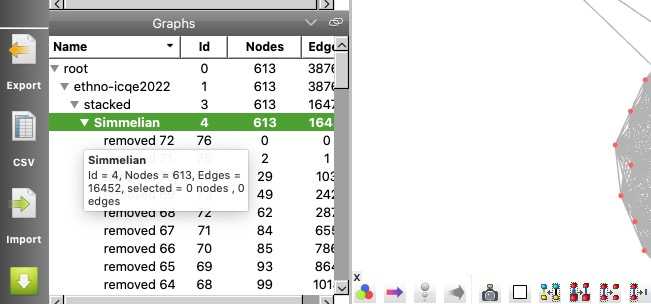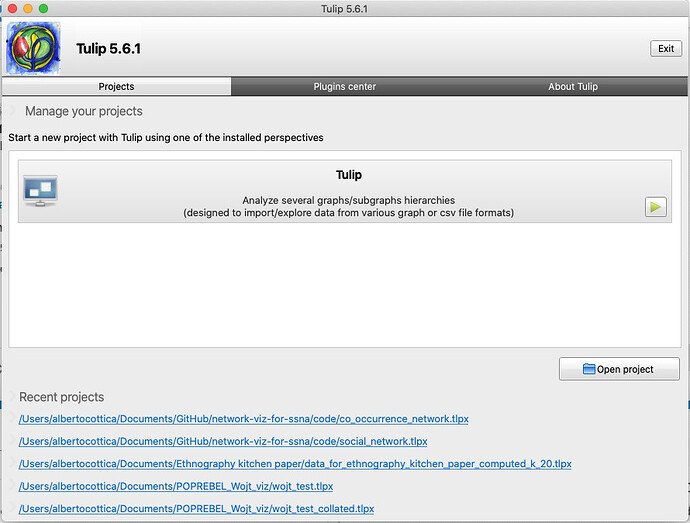I am still learning the interface and did not want to damage anything – I don’t know if it’s finetuning but I made a suggestion (just inserted it in bold) for a slightly more nuanced opening – so it can be easily deleted if necessary. Also as a minor note (so we can also put a pin in it for the fine-tuning stage, just mentioning it here so I don’t forget it), I don’t think the Marilyn Strathern reference works – the way she theorizes “networks” is quite different than scholars applying systematic visualization techniques – I would remove her as a reference from that sentence altogether.
Thanks! Three remarks:
- I can see we have different writing styles: my first sentence is 14 words long, yours 71! Let’s you and I sit down and discuss how we should write “as a team”.
- I see a long deletion in section 1 that starts and ends in mid-word. Am I wrong in supposing it was unintentional?

In general, I propose to use the comment functionality when further discussion is needed. Straight edits can be just made on the file. Accordingly, I restored my version and put your suggested opening in a comment.
@Maniamana, @Wojt – I have scheduled a meeting with @bpinaud to get the computation going. Would it be possible to have the corpus today (Friday)? How do I get it, is there a Discourse ethno-SOMETHING tag?
Yeah, I’m just brushing up on the last four interviews. I should be ready in, say, two-three hours. I will add the tag if I can or ask Mania to do it. Unfortunately it’s taking longer than expected (I need to keep looking for codes I already used but that do not appear in suggestions because I cannot set up the system to suggest codes from more than one discourse…my oh my…I could just add the ethno-poprebel tag to all the new material threads, couldn’t I? damn…) so yeah. Can you hold on till 1 PM Polish time?
You can also get suggestions from authors:
That’s a good idea regardless. Discourse supports bulk tagging, so it should be quite fast:
Yes, no problem.
I don’t have this option, it seems ![]()
Ok, can you have a look at the ethno-rebelpop tagged ones and see if there is enough material? There are several more on the platform that I could try and code ASAP.
You do now.
Thanks! I could not figure out how to turn on the comment functionality.
Yes, the long deletion is an error. And yes, let’s discuss team-writing  I definitely skew towards long sentences (which is probably a disciplinary anthropology vs economics difference) but am happy to shorten them, as long as the nuance I aim to get across is preserved. Which can definitely be done in shorter sentences!
I definitely skew towards long sentences (which is probably a disciplinary anthropology vs economics difference) but am happy to shorten them, as long as the nuance I aim to get across is preserved. Which can definitely be done in shorter sentences!
@Wojt I just harvested the corpus, but it seems you guys have not added any more topics, or is it me?
Calling all @icqe22_authors! The data have been harvested and transferred to Bruno. He will produce one Tulip file for each reduction method. Each file will contain the CCN, reduced according to all (or many, if it is clear that reducing becomes obviously useless after a certain threshold) possible values of the reduction parameter for that method.
With Tulip, you will be able to navigate those files without having to write any code. You can get Tulip here: Download Tulip.
If you have time, we could get together tomorrow (Tuesday) and I can give you a crash course on how to navigate a graph using Tulip. You can also peruse the documentation.
I will also try to get a quick Graphryder dashboard up, but it will only support association depth.
I’d appreciate a crash course! I’m free all day.
Tulip files sent to Alberto. Each file contains all reductions for all possible values. Pick the one(s) you like.
What time is your meeting with Jan?
Time zone alert. Your morning is not our own. Could it be 16.00 CEST?
Meanwhile: computation done by the lightning-fast @bpinaud (thanks!) and me.
Tulip folders are here.
You will find one file per each reduction technique. To open them, it is NOT sufficient to double click. The procedure is this:
-
Launch Tulip. You will see something like this:
. -
Click on
Open project. Navigate to the file you want and confirm. You should then see the Tulip perspective window: -
To the bottom left, you can use the little arrows to see the complete set of filtered networks. Double-clicking on one network name will open a new tab in the perspective with the selected network. Choose
Node-link diagramfrom the pop-up menu.
All graphs are named removed NN, which means “all edges (in the case of the technique based on core values, all nodes) where the filtering parameter is NN or lower have been removed.” So, for example, if you are looking at the association depth file, removed 04 means that all edges between codes that co-occurred 4 times or less have been removed, and the minimum number of co-occurrences behind the edges still remaining is 5.
I can’t make it for 16.00, the initial plan was to meet at 14.00 CEST.
Yes, of course, @alberto thank you for the time zone alert, I meant mine and @Jan’s morning. Yes the plan was for 14.00 (8 am our time) and there was no firm length specification – I would be available after (so, at 15.00 or 15.30 or 16.00 or later).
OK, I’ll log in at 15.30.


